Related Research Articles

Franconia is a region of Germany, characterised by its culture and Franconian dialect.

Bavarian or alternately Austro-Bavarian, is a West Germanic language consisting of a group of dialects, part of the Upper German family, together with Alemannic and East Franconian.
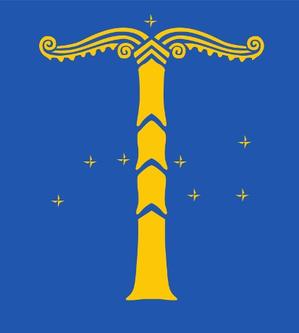
The Artgemeinschaft Germanic Faith Community is a German Neopagan and Neo-Nazi organization founded in 1951 by Wilhelm Kusserow, a former member of the SS. In 1983, it merged with the Nordungen. From 1989 to 2009, it was headed by Jürgen Rieger.

Adolf Reichwein was a German educator, economist, and cultural policymaker for the SPD, who resisted the policies of Nazi Germany.
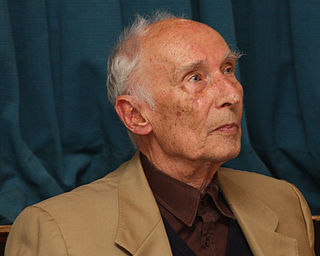
Adolf Holl was an Austrian Catholic writer and theologian. He lived in Vienna, where he was Chaplain of the University of Vienna and a lecturer in its Department of Catholic Theology. Because of conflicts with Church authorities, he was suspended from his teaching and priestly duties. He wrote many books, including Jesus in Bad Company and The Last Christian: A Biography of Francis of Assisi.
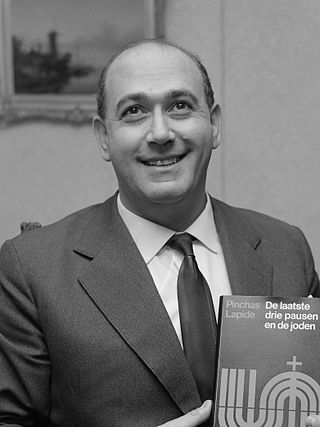
Pinchas Lapide was a Jewish theologian and Israeli historian. He was an Israeli diplomat from 1951 to 1969, among other position acting as Israeli Consul to Milan, and was instrumental in gaining recognition for the young state of Israel. He wrote more than 35 books during his lifetime. Lapide was married to Ruth Lapide with whom he shared his interests and endeavors.
The Colloquy of Regensburg, historically called the Colloquy of Ratisbon, was a conference held at Regensburg (Ratisbon) in Bavaria in 1541, during the Protestant Reformation, which marks the culmination of attempts to restore religious unity in the Holy Roman Empire by means of theological debate between the Protestants and the Catholics.
Reinhart Hummel was a German theologian and long-term leader of the Evangelische Zentralstelle für Weltanschauungsfragen (EZW). The EZW is a subdivision of the Evangelical Church in Germany. Located in Berlin, it professes to function as a centralized research, documentation and information center on new religious movements. Hummel is also the author of many books about new religious movements.

The Baltic Landwehr or Baltische Landeswehr was the name of the unified armed forces of Couronian and Livonian nobility from 7 December 1918 to 3 July 1919.
High Prussian is a group of East Central German dialects in former East Prussia, in present-day Warmian-Masurian Voivodeship (Poland) and Kaliningrad Oblast (Russia). High Prussian developed in the 13th–15th centuries, brought in by German settlers mainly from Silesia and Thuringia, and was influenced by the Baltic Old Prussian language.
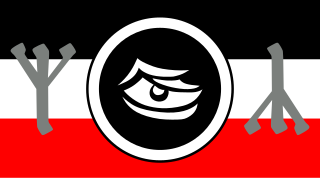
Deutsche Heidnische Front was a far right Neo-Nazi group created in 1998 as the German section of the Heathen Front. It was formed by avowed neo-Nazi Hendrik Möbus. It has been inactive since 2005.
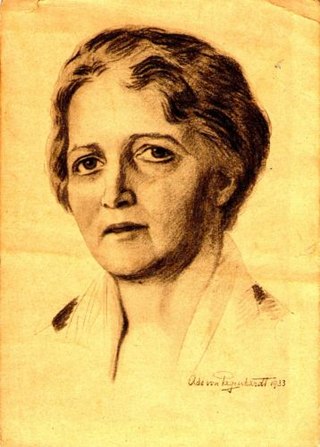
Mathilde Friederike Karoline Ludendorff was a German psychiatrist. She was a leading figure in the Völkisch movement known for her unorthodox (esoteric) and conspiratorial ideas. Her third husband was General Erich Ludendorff. Together with Ludendorff, she founded the Bund für Gotteserkenntnis, a small and rather obscure esoterical society of theists, which was banned from 1961 to 1977.

Hans Joachim Schliep is a German Lutheran theologian, pastor and author. From 1990 to 1999 he was director of the Amt für Gemeindedienst, and by May 2000 the commissioner for the environment of the Church of Hanover and the Confederation of Protestant Churches in Lower Saxony. From 1999 to 2008 Schliep was the first pastor at the Kronsberg Church Centre and founder of the congregation at the Expo-neighbourhood in Kronsberg, Hanover, Lower Saxony, Germany.
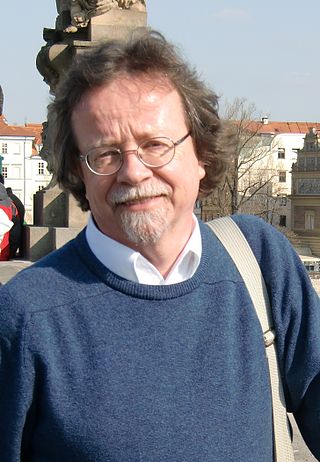
Christoph Bode is a literary scholar. His fields are British and American literature, comparative literature, literary theory, narratology, and travel writing. He is full professor and chair of Modern English literature in the Department of English and American Studies at Ludwig-Maximilians-Universität München. Since 2009, Bode has been a reviewer and occasional columnist for Times Higher Education.

The Verein für germanisches Heidentum, abbreviated VfGH, is a Germanic neopagan organisation in Germany. It began in 1994 as the German chapter of the British Odinic Rite and was called the Odinic Rite Deutschland. It became independent in 2004 and changed its name in 2006. It has never had many members but has been influential among German neopagans. Prominent people within the organisation have included Bernd Hicker, who was its first leader, and Fritz Steinbock, who has managed and influenced its religious practice.

Henry Keazor is a German art historian. He is a Professor of Art History at Heidelberg University.
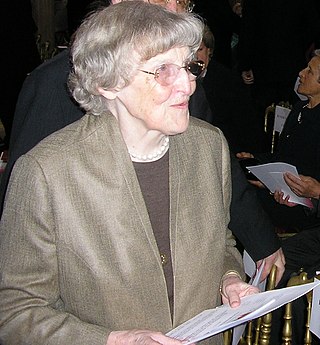
Gertraud “Traudl” Wallbrecher, a representative of the Catholic avant-garde of the 20th century, was the initiator of the Catholic Integrated Community, which she established with her husband Herbert Wallbrecher (1922-1997) after the Second World War.
The Brabant Road, Cologne to Leipzig Road or Liege Road is an ancient road which, during the Middle Ages and Early Modern Period, was one of the most important continental east-west oriented military and trade routes. It ran from the eponymous Duchy of Brabant to Leipzig.
Ivo Sasek is a Swiss-German lay preacher, author of religious writings and leader of the religious sect Organic Christ Generation (OCG), which he founded in 1999. This organization, classified as a cult, has between two and three thousand members. In 2008, Sasek founded the "Anti-Censorship Coalition" (AZK), a forum for right-wing esotericism, conspiracy theories, antisemitism, xenophobia and historical revisionism, including Holocaust denial. From Sasek's Panorama Center in Walzenhausen, Switzerland, these organizations and their numerous media outlets are run, including the neo-Right online channel Klagemauer.tv. Sasek rejects an open, democratic and pluralistic society.
References
- ↑ René Freund: Braune Magie? Okkultismus, New Age und Nationalsozialismus. Picus-Verlag, Wien 1995, ISBN 3-85452-271-1, S. 183.
- ↑ René Gründer: Germanisches (Neu-)Heidentum in Deutschland. Entstehung, Struktur und Symbolsystem eines alternativreligiösen Feldes (= PeriLog. Bd. 2). Logos, Berlin 2008, ISBN 978-3-8325-2106-6, S. 96.
- ↑ Hugo Stamm: Im Bann des Maya-Kalenders. Endzeithysterie in Sekten und Esoterik. Gütersloher Verlags-Haus, Gütersloh 2012, ISBN 978-3-579-06674-5, S. 160 und Reimar Oltmanns: Aus deutschen Landen – Rotwein, Runen, Rechtsradikale. In: Stern , vom 6. Mai 1976.
- ↑ Rainer Fromm: Am rechten Rand. Lexikon des Rechtsradikalismus. Mit Beiträgen von Barbara Kernbach und Hans-Gerd Jaschke. 2., aktualisierte Auflage. Schüren , Marburg u. a. 1994, ISBN 3-89472-104-9, S. 101 f. und Reimar Oltmanns: Aus deutschen Landen – Rotwein, Runen, Rechtsradikale. In: Stern, vom 6. Mai 1976.
- ↑ Hugo Stamm: Im Bann des Maya-Kalenders. Endzeithysterie in Sekten und Esoterik. Gütersloher Verlags-Haus, Gütersloh 2012, ISBN 978-3-579-06674-5, S. 160.
- ↑ Rainer Fromm: Am rechten Rand. Lexikon des Rechtsradikalismus. Mit Beiträgen von Barbara Kernbach und Hans-Gerd Jaschke. 2., aktualisierte Auflage. Schüren , Marburg u. a. 1994, ISBN 3-89472-104-9, S. 102.
- ↑ Stefan von Hoyningen-Huene: Religiosität bei rechtsextrem orientierten Jugendlichen (= Religion und Biographie. Bd. 7). LIT Verlag, Münster u. a. 2003, ISBN 3-8258-6327-1, S. 233.
- ↑ René Gründer: Germanisches (Neu-)Heidentum in Deutschland. Entstehung, Struktur und Symbolsystem eines alternativreligiösen Feldes (= PeriLog. Bd. 2). Logos, Berlin 2008, ISBN 978-3-8325-2106-6, p. 24.
- ↑ Stefan von Hoyningen-Huene: Religiosität bei rechtsextrem orientierten Jugendlichen (= Religion und Biographie. Bd. 7). LIT Verlag, Münster u. a. 2003, ISBN 3-8258-6327-1, S. 62 f.
- ↑ Hugo Stamm: Im Bann des Maya-Kalenders. Endzeithysterie in Sekten und Esoterik. Gütersloher Verlags-Haus, Gütersloh 2012, ISBN 978-3-579-06674-5, S. 160.